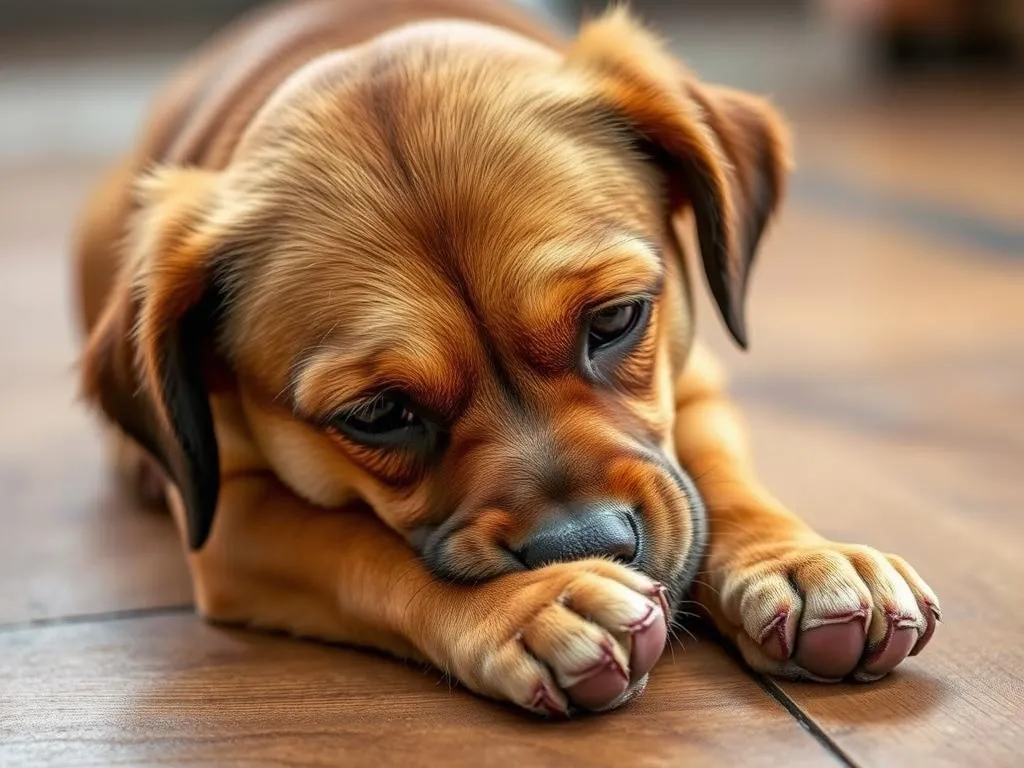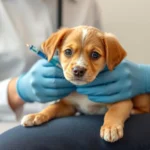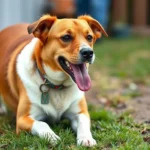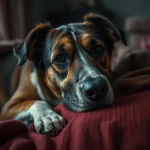
Introduction
Dogs are known for their playful and loving nature, but certain behaviors can cause concern for pet owners. One such behavior is licking their paws. While occasional paw licking is normal, excessive licking can indicate underlying issues that need to be addressed. Understanding why dogs lick their paws is crucial for maintaining their health and well-being.
This article aims to provide dog owners with actionable solutions on how to stop my dog from licking their paws. By exploring the reasons behind this behavior, assessing your dog’s health, providing home remedies, and discussing veterinary solutions, you can better support your furry friend.
Understanding the Reasons Behind Paw Licking
Natural Behavior
Licking is a natural behavior for dogs, much like it is for many animals. Dogs lick their paws as a form of self-grooming, helping them keep clean and remove debris. In the wild, this behavior is vital for maintaining hygiene and preventing infections. However, when licking becomes excessive, it can lead to problems rather than solutions.
Allergies
One of the most common reasons dogs lick their paws is due to allergies. These can be environmental, such as pollen, dust, and mold, or food-related, stemming from specific ingredients in their diet. Symptoms to look for include:
- Red, inflamed paws
- Excessive scratching or biting
- Ear infections or itchy skin
If you notice any of these signs, it may be time to investigate potential allergens in your dog’s environment or diet.
Skin Conditions
Various skin conditions can also cause dogs to lick their paws excessively. Common issues include:
- Dermatitis: Inflammation of the skin that can result from allergies, irritants, or infections.
- Infections: Bacterial or fungal infections can lead to discomfort and excessive licking.
Signs of skin conditions may include redness, swelling, or even an unpleasant odor coming from the paws. If you observe these symptoms, it’s advisable to consult your veterinarian.
Behavioral Issues
Sometimes, excessive paw licking is a sign of behavioral problems. Dogs may lick their paws due to:
- Anxiety and stress: Just like humans may bite their nails when nervous, dogs may lick to self-soothe.
- Boredom or lack of exercise: Dogs need mental and physical stimulation. A lack of activity can lead to destructive behaviors.
- Separation anxiety: Dogs that experience anxiety when left alone may resort to licking as a coping mechanism.
Pain or Discomfort
In some cases, dogs may lick their paws due to pain or discomfort. Possible causes include:
- Injuries: Cuts, scrapes, or foreign objects lodged between the toes can lead to excessive licking.
- Joint pain or arthritis: Older dogs, in particular, may lick their paws as a response to discomfort from joint pain.
If you suspect your dog is in pain, it’s crucial to seek veterinary attention.
Assessing Your Dog’s Health
Observational Techniques
Monitoring your dog’s behavior can provide valuable insights. Pay attention to:
- Licking frequency and duration: How often does your dog lick their paws? Is it constant or intermittent?
- Other symptoms: Look for signs like limping, excessive grooming, or changes in appetite.
Keeping a journal of your observations can help you communicate effectively with your veterinarian.
When to Seek Veterinary Help
Certain signs indicate that it may be time to consult a veterinarian, including:
- Persistent licking lasting more than a few days
- Signs of injury or infection (e.g., pus, swelling)
- Behavioral changes (e.g., loss of appetite, lethargy)
Early intervention is key to preventing more serious health issues.
Diagnostic Tests
Veterinarians may conduct various tests to diagnose the underlying cause of paw licking. Common tests include:
- Skin scrapings: To check for parasites or infections.
- Allergy tests: To identify specific allergens affecting your dog.
Understanding the results from these tests can help guide appropriate treatment options.
Home Remedies for Excessive Paw Licking
Cleaning and Care
One of the simplest ways to address excessive paw licking is by keeping your dog’s paws clean. Regularly wash their paws to remove irritants. Recommended cleaning solutions include:
- Mild soap: Use a gentle soap designed for pets.
- Dog-safe wipes: Convenient for quick clean-ups after walks.
Topical Treatments
Natural remedies can also provide relief from excessive licking:
- Coconut oil: Moisturizes the skin and has antibacterial properties.
- Aloe vera: Soothes irritated skin and promotes healing.
Over-the-counter creams and ointments specifically formulated for dogs can also help alleviate discomfort.
Environmental Adjustments
Examine your home and yard for potential allergens. Keeping a clean living space can help reduce irritants:
- Regularly vacuum to remove dust and allergens.
- Use air purifiers to improve air quality.
- Limit exposure to allergens during peak seasons, such as pollen in spring.
Behavioral Modifications
Training Techniques
Training your dog to reduce paw licking can be effective. Positive reinforcement methods work well to divert their attention. You can:
- Teach them commands to engage them in other activities.
- Use treats and praises to reward them when they stop licking.
Enrichment Activities
Providing physical and mental stimulation is vital for your dog’s well-being. Consider incorporating:
- Daily walks and play sessions.
- Interactive toys that challenge their mind.
- Puzzle feeders that make mealtime engaging.
Anxiety Reduction Strategies
Creating a calm environment can help alleviate anxiety-related licking. Strategies include:
- Setting up a safe space where your dog can retreat to feel secure.
- Playing calming music or using white noise machines.
- Utilizing anxiety-reducing products like wraps or pheromone diffusers.
Veterinary Solutions
Prescription Medications
In some cases, your veterinarian may prescribe medications to address underlying issues. Common medications include:
- Antihistamines: To mitigate allergic reactions.
- Steroids: To reduce inflammation.
Be aware of potential side effects, and discuss these with your veterinarian.
Allergy Testing and Immunotherapy
If allergies are suspected, your veterinarian may recommend allergy testing. This can help identify specific triggers. For long-term relief, immunotherapy may be an option, gradually desensitizing your dog to allergens over time.
Ongoing Health Monitoring
Regular follow-up visits with your veterinarian are essential for tracking your dog’s progress. Keeping a health diary to note changes in behavior, symptoms, or treatments can be beneficial for ongoing discussions with your vet.
Preventative Measures
Regular Grooming
Grooming is vital for maintaining your dog’s skin health and preventing issues. Aim for:
- Brushing: Regular brushing to remove loose hair and debris.
- Bathing: Bathing every few months with pet-safe shampoo.
Balanced Diet
A nutritious diet plays a crucial role in your dog’s overall health. Consider:
- Feeding high-quality dog food with balanced nutrients.
- Exploring hypoallergenic dog food if allergies are suspected.
Routine Vet Check-ups
Regular veterinary examinations are essential for early detection of health issues. Ensure your dog receives:
- Annual vaccinations and wellness checks.
- Ongoing monitoring for any chronic conditions.
Conclusion
In summary, understanding the reasons behind your dog’s paw licking is essential for their health. By assessing their behavior, implementing home remedies, considering behavioral modifications, and seeking veterinary solutions, you can effectively address the issue.
As a responsible dog owner, it’s important to take action promptly, as excessive paw licking can lead to more serious health concerns if left unaddressed. Your dog’s well-being depends on your attentiveness and willingness to seek solutions.
By taking the necessary steps outlined in this article, you can provide your dog with a happier, healthier life, free from the discomfort of excessive paw licking.









